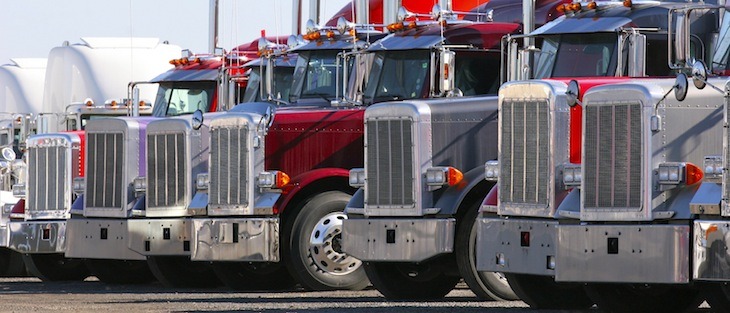Carriers expect driver pay to rise, freight demand strong
by January 29, 2019 2:07 pm 842 views

Carriers still expect truck driver pay will rise as freight demand remains strong but not at the level it was at this time in 2018.
Trucking companies are offering “innovative packages” to recruit and keep drivers, according to a fourth-quarter report by Tulsa-based driver screening company Driver iQ.
“Recruiting executives have mixed reviews on what they think turnover will do in (the first quarter of 2019) with one-third each expecting it to increase, decrease and remain the same,” said Lana Batts, co-president of Driver iQ. “However, 60% expect that future driver compensation will continue to increase. Most unexpectedly was that 25% believed that driver pay would have to approach $100,000 before there could be a significant impact on turnover.”
Recently, Bentonville-based retailer Walmart announced it increased driver pay, allowing drivers to earn an average of $87,500 in their first year.
Batts said 65% of carriers hire entry level-drivers, up from 30% in 2012, and about 25% look to increase their driver pool by operating their own entry-level training schools. Up-front costs, employing trained staff and having a training facility have limited a carrier’s ability to offer in-house training. And, a trained driver might leave the industry or start to work for another carrier before the company were to recoup its costs.
Driver recruits who stay with a company for more than two years are those that come from referrals and rehires, according to Driver iQ. More than 70% of carriers support the concept of drivers ages 18-21 working in interstate commerce, but only 60% would actually hire such a young driver.
While driver pay looks to continue to rise, U.S. trucking demand was as expected in January, according to analysts Benjamin Hartford and Andrew Reed, both of Baird. Spot truck demand remained strong but was softer than a year ago. Spot rates have fallen 20% from this time last year and have been less than the seasonal average of the past few weeks.
The average spot rate for dry van shipments fell below $2 per mile for the first time since September 2017, according to DAT Solutions. Falling fuel surcharges and increased capacity in the spot market are putting pressure on rates to decline.
“Strong prior-year comparisons undoubtedly contribute to the decline in spot rates,” said Hartford and Reed. “Anecdotes during January have been mixed, with some noting incremental supply loosening but other contacts still describing capacity challenges, particularly off the U.S. West Coast given the surge in import volumes last month.”
In Lowell-based carrier J.B. Hunt Transport Services’ fourth-quarter earnings call, Terrence Matthews, executive vice president and president of intermodal, said the company has heard ocean freight ships were more than 90% loaded in January, and from an intermodal standpoint, this month should be just as good as the same month in 2018. But he noted the ocean carriers might be sending freight in advance of the Chinese New Year in February to meet March demand. Another impact on ocean freight volume regards the potential for new tariffs between China and the United States on March 1, and Matthews believes this might lead to a pull-forward of inventory ahead of the tariffs, similar to December.
Matthews expects trucking capacity to become looser and for intermodal service to increase in 2019. Rail service issues, resulting in slow train speeds, had tied up between 5,000 and 6,000 of J.B. Hunt’s intermodal containers, but the company has started to get those containers back, he said. Also, through 20% of the company’s intermodal bids, it has seen high-single-digit rate increases and increased volume. The company looks to increase volume to offset the issues related to precision railroading in the East. Matthews said the issues are expected to cost the company between 50,000 and 70,000 loads, depending on the timing, but through 20% of the carrier’s bids, the company has been able to replace half of the business it would have lost in 2019 as a result of the issues.
While truckload and intermodal rates followed a similar pattern in 2018, Matthews said intermodal rates might rise more quickly that trucking rates as demand for more trans loading could support pricing increases in the West Coast. Shelley Simpson, executive vice president, chief commercial officer and president of highway services, said truckload market customers want to stabilize their capacity and be able to predict their costs. Early in the bidding season, trucking rates have risen in the mid-single-digits, and more of the customers might look to convert their freight to intermodal as railroad speeds rise and capacity increases, allowing customers to decrease their overall transportation costs, Simpson said.
Intermodal freight volume has risen 5.9% so far in the quarter, from the same time in the period in 2018, according to Hartford and Reed.
